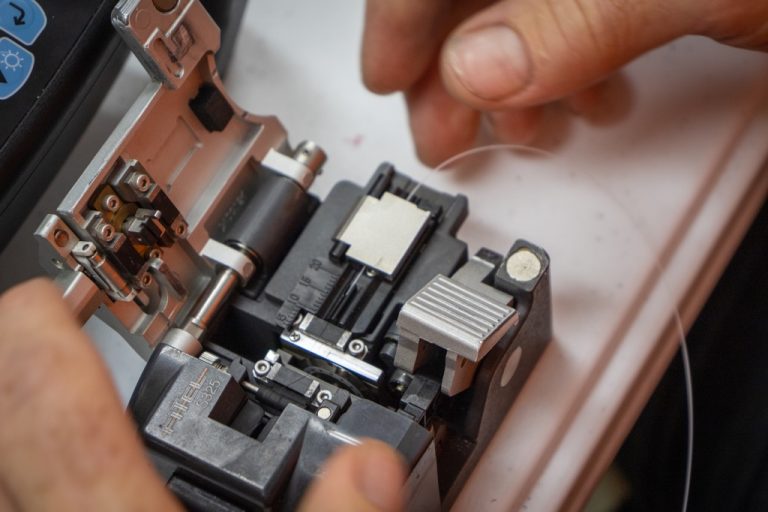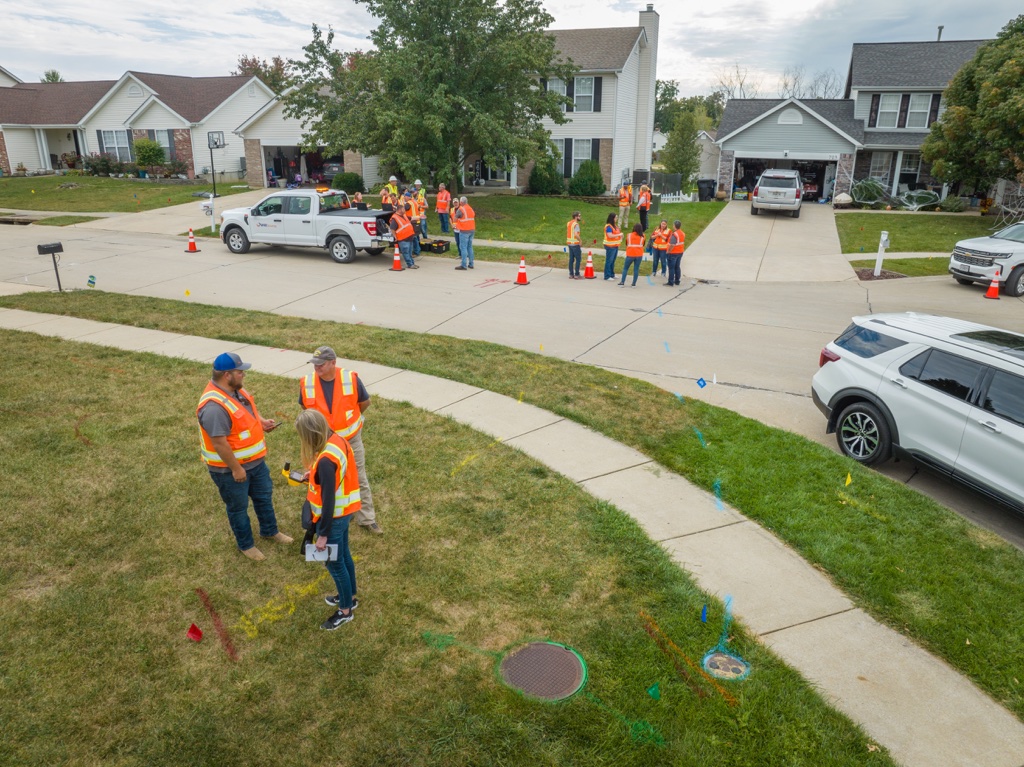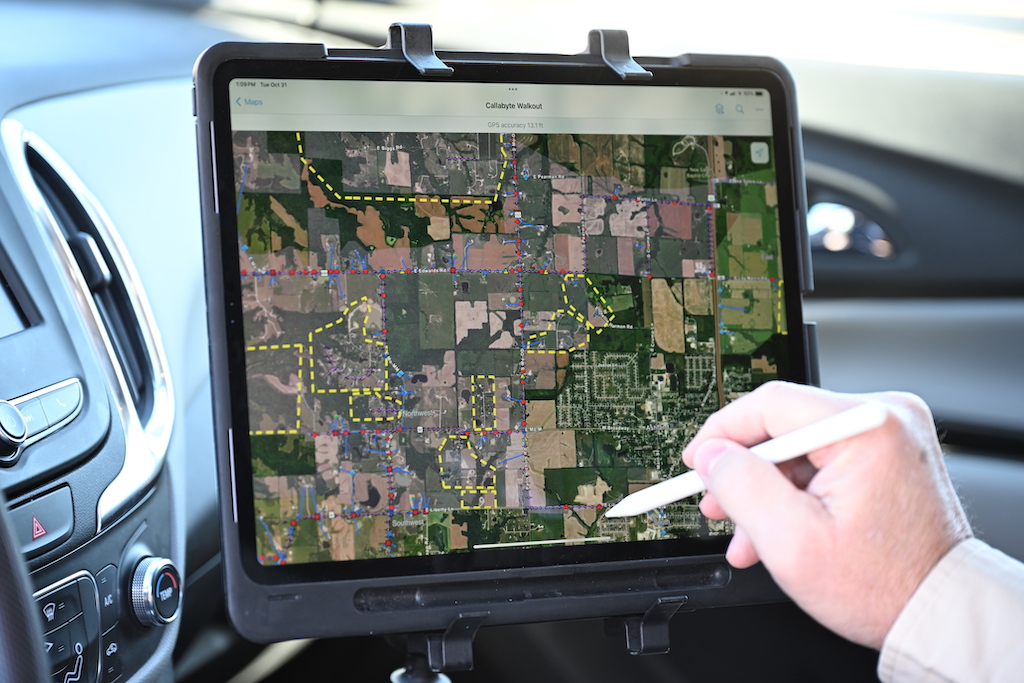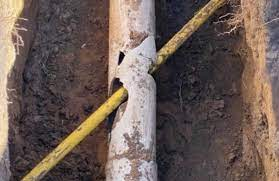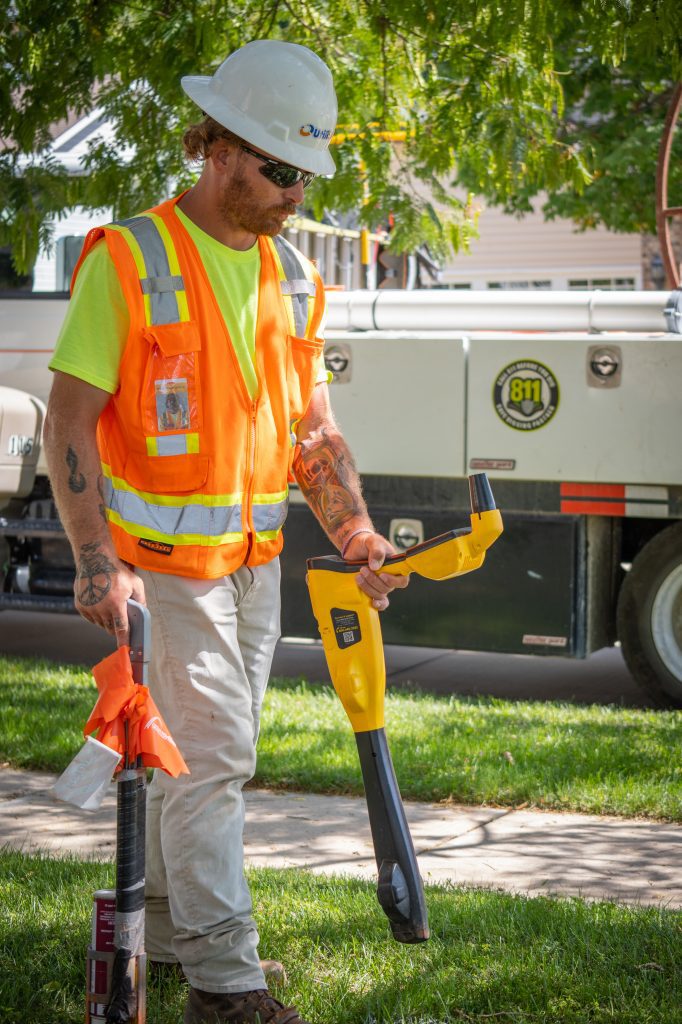Fiber optic splicing is an integral part of the installation and maintenance of fiber optic cable networks. Whether there are new connections or expansions that need to be made or repairs when a cable is severed, fiber optic splicing is how the world stays online.
What are Fiber Optic Cables?
To begin, fiber optic cables are what connects homes and businesses around the world on a network. Their main purpose is to facilitate data networking and telecommunications, supplying resources such as wi-fi and internet services, telephone systems, and cable television. In this day and age, society thrives by utilizing communication signals every day, whether it be for work, entertainment, or keeping up with friends and family.
The physical characteristics of fiber optic cables is what makes them suitable for high performances across long distances. These cables are essentially strands of glass fiber that reside within an insulated casing. They work by sending signals with light emitting diodes, or light generated by small lasers, which follow the pathway created by the long glass strands.
Fiber optic cables can be single or multi mode fibers. Single mode fibers utilize lasers to generate light, while multimode fibers use LEDs.
Fiber Optic Splicing
The goal of splicing fiber optic cables is to join two cables together with minimal splicing loss. This is often used for cable network expansion or repairs, and can occur in field settings or within cable assembly houses. Fusion splicing and mechanical splicing are the two methods used to accomplish this, however, fiber connectors can also be used but may result in insertion loss.
Types of Splicing
Fusion Splicing
The fusion splicing method for fiber optic cables occurs in two steps. First, the two fibers must be precisely aligned to join the two fiber optic cables. A fusion splicing machine can be used to accomplish this to ensure accuracy in alignment.
Next, step 2 is to cleave the fibers. This happens using some form of heat or an electric arc to melt fibers, glass ends can be welded or fused together. This enables a continuous connection with low loss of light transmission, often below 0.1 dB.
Mechanical Splicing
Unlike fusion splicing, mechanical splicing does not utilize a fusion splicer machine nor does it fuse fibers. Instead, bare fiber optic cables are aligned, held in alignment using index matching gel, and secured mechanically using an assembly that is about 6 cm long, 1 cm in diameter. Although it can cause 0.3 dB light transmission loss, it can enhance reflection through the cables.
This is not a permanent fusion, but a precise fastening to the mechanical splice that holds the optical fibers together. This splicing method can be easy to perform, and are useful for both quick repairs as well as permanent installations. Additionally, they can be used for both single mode and multimode fibers.
The Importance of Using Advanced Solutions For Fiber Optic Splicing Operations
Keeping up with new technology, training, and software for managing fiber optic splicing operations is vital for staying efficient, competitive, and successful in splicing practices. Advanced solutions for managing field fiber optic splicing can greatly enhance your workflow and data management.
Efficiency and Expertise in the Field
Keeping up with training for field technicians is important for the success of fiber optic operations. Thorough training lays the groundwork for building knowledge and expertise, allowing technicians to identify problems and come up with effective solutions on the spot. Fully understanding how fiber optic networks work, how to troubleshoot problems, and how to utilize technologies and equipment to its fullest potential is critical, and keeping up with training and certification is how this is accomplished.
New Technologies
Smart fiber optic instruments have been in development and testing in recent years. While not all attempts with these technologies have been successful, there are AI instruments beginning to show success for use in the field. Monitoring advancements in the industry can reveal important changes that encourage growth in the field of fiber optics.
Field Data Management
When performing installations or maintenance/repairs in the field, tracking what sections of fiber optic cables have been worked on, what still needs to be done, and tracking how long projects take to determine when the project will be completed is important. Additionally, keeping up with the materials used and what will be needed to finish can reduce down time and save money.
Nowadays, field management and data technologies are available that can handle these operational management and data tracking needs in real time. Some softwares can even be linked to geographic information systems (GIS) for the visualization of fiber optic networks throughout the fieldwork process. This is useful for both field workers and management, streamlining fiber optic network field operations by creating an advanced knowledge base for quick and informed decision making and planning.
UtiliSource can help.
At UtiliSource we offer a variety of utility management and service solutions for your needs. We offer utility engineering and design, compliance services, and GIS mapping services. Contact us today for all of your utility-related needs.

